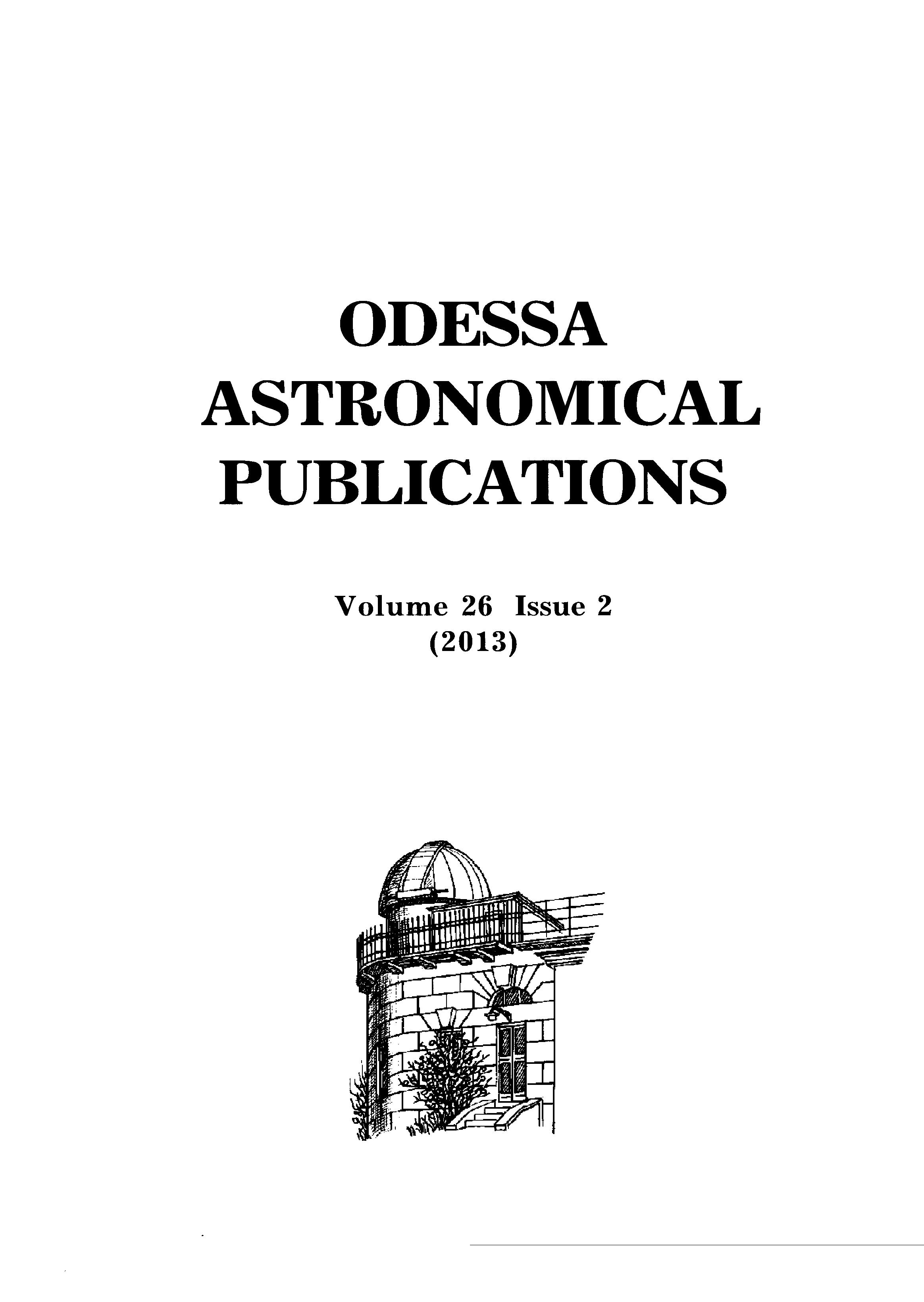STUDY OF SATURN ELECTROSTATIC DISCHARGES IN A WIDE RANGE OF TIME SCALES
DOI:
https://doi.org/10.18524/1810-4215.2013.26.83770Ключові слова:
electrostatic discharges, microstructure, flux density, dispersion delayАнотація
Saturn Electrostatic discharges (SED) are sporadic broadband impulsive radio bursts associated with lightning in Saturnian atmosphere. After 25 years of space investigations in 2006 the first successful observations of SED on the UTR-2 radio telescope were carried out [1]. Since2007 along-term program of ED search and study in the Solar system has started. As a part of this program the unique observations with high time resolution were taken in 2010.
New possibilities of UTR-2 radio telescope allowed to provide a long-period observations and study with high temporal resolution. This article presents the results of SED study in a wide range of time scales: from seconds to microseconds. For the first time there were obtained a low frequency spectrum of SED. We calculated flux densities of individual bursts at the maximum achievable time resolution. Flux densities of most intensive bursts reach 4200 Jy.
Посилання
Konovalenko A.A., Kalinichenko N.N., Rucker H.O., et. al.: 2013, Icarus, 224, 14.
Dyudina U.A., Ingersoll A.P., Ewald S.P., Porco C.C., Fischer G., Kurth W.S., West R.A.: 2010, Geophys. Res. Lett., 37, №9 , L09205.
Fischer G., Kurth W.S., Gurnett D.A., Zarka P., Dyudina U.A., Ingersoll A.P., Ewald S.P., Porco C.C., Wesley A., Go C., Delcroix M.: 2011, Nature, 475, №7354, 75.
Zakharenko V., Mylostna K., Konovalenko et. al.: 2012, Planetary and Space Science, 61, №1, 53.
Mylostna K., Zakharenko V., Konovalenko A.A., Litvinenko G.V.: 2013, Proc. MSMW’13 Symposium, Kharkiv (Ukraine), 474.
Konovalenko A., Falkovich I., Rucker H. et al.: 2011, Proc. of PRE VII., Graz (Austria), 521.
Mylostna K.Y., Zakharenko V.V.: 2013, Radiofizika i Radioastronomia, 18, №1, 12.
Fischer G., Kurth W.S., Dyudina U.A., Kaiser M.L. et. al.: 2007, Icarus, 190, №2, 528.
Zarka P., Pedersen B.: 1983, J. of Geophys. Res., 88, Issue A11, 9007.
Farrell W.M., Kaiser M.L., Fischer G., Zarka P., Kurth W.S., Gurnett D.A.: 2007, Geophys. Res. Lett., 34, №6, L06202.
Backer D.C., Hama S., Hook S.V., Foster R.S.: 1993, ApJ, 404, 636.
Hankins T.H.: 1971., ApJ, 169, 487.
Farrell W.M., Desch M.D.: 1992, 19, Issue 7, 665
##submission.downloads##
Опубліковано
Як цитувати
Номер
Розділ
Ліцензія
Авторське право (c) 2016 Odessa Astronomical Publications

Ця робота ліцензується відповідно до Creative Commons Attribution-NonCommercial 4.0 International License.
Відповідно Закону України про авторське право і суміжні права N 3792-XII від 23 грудня 1993 року
